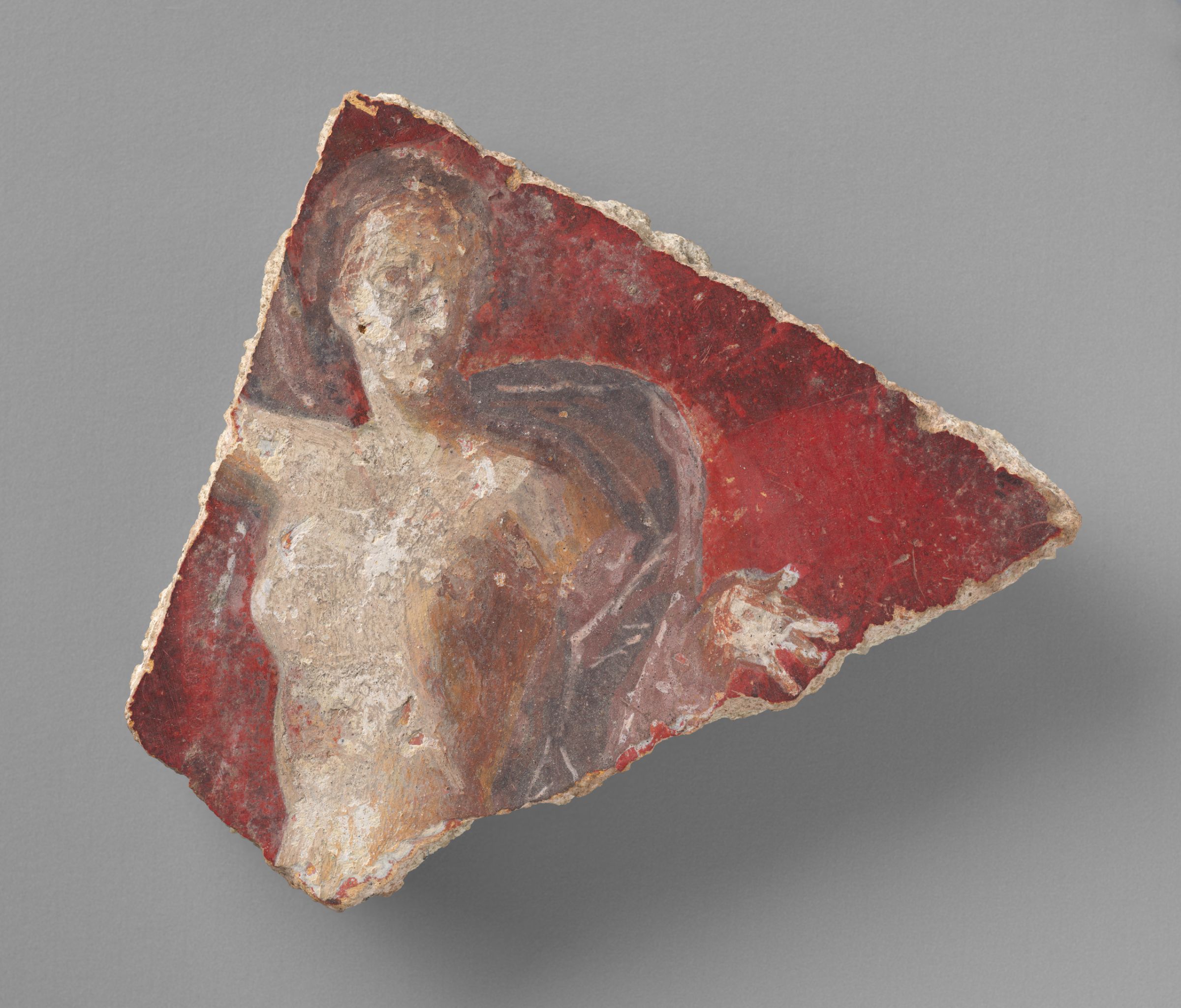1995.1130: Wall Painting Fragment with Mask
Fragments
This object does not yet have a description.
Identification and Creation
- Object Number
- 1995.1130
- Title
- Wall Painting Fragment with Mask
- Classification
- Fragments
- Work Type
- wall painting fragment(s)
- Date
- 1st century BCE-1st century CE
- Places
- Creation Place: Ancient & Byzantine World, Europe
- Period
- Roman Imperial period, Early
- Culture
- Roman
- Persistent Link
- https://hvrd.art/o/287267
Physical Descriptions
- Medium
- Pigment on plaster
- Technique
- Fresco painting
- Dimensions
- H. 10.5 × W. 6.5 × D. 2.1 cm (4 1/8 × 2 9/16 × 13/16 in.)
Provenance
- Recorded Ownership History
-
Nelson Goodman, Weston, MA (by 1995), gift; to Harvard University Art Museums, 1995.
Acquisition and Rights
- Credit Line
- Harvard Art Museums/Arthur M. Sackler Museum, Gift of Nelson Goodman
- Accession Year
- 1995
- Object Number
- 1995.1130
- Division
- Asian and Mediterranean Art
- Contact
- am_asianmediterranean@harvard.edu
- Permissions
-
The Harvard Art Museums encourage the use of images found on this website for personal, noncommercial use, including educational and scholarly purposes. To request a higher resolution file of this image, please submit an online request.
Descriptions
- Description
-
This fragment depicts a mask in the center of a delicate green vine medallion. Careful highlighting in white and light pink render eyes, a nose, and mouth. The delicate green leaves of the vine are dotted with pink and yellow fruit. A very thin brush was used to apply the yellow paint to the black background, likely in one continuous stroke.
- Commentary
-
Brightly colored wall paintings often decorated the interior, and sometimes exterior, of Roman buildings. The fragment shown is just one small part of a much larger decorative scheme that would have covered an entire wall.
The small piece comes from a much larger composition that most likely decorated a wall in the interior of a Roman home. The style of intricate wall painting seen here became popular during the reign of Augustus in the late first century BCE-early first century CE (1). The light and delicate decoration floats on a black background with little to no sense of depth or volume.
Masks are frequent motifs in frescoes of this period where they often appear tucked amongst architectural elements including aediculae or columns (2).
Notes:
1. The Black Room at Boscotrecase Metropolitan Museum of Art, 20.192.10: Carlos A. Picón, 2007. Art of the Classical World in the Metropolitan Museum of Art: Greece, Cyprus, Etruria, Rome no. 399, pp. 342-43, 484, New York: The Metropolitan Museum of Art.
2. Compare to similar fragments from the Villa at Fondo Bottaro: RISD 38.058.3; or the Museum of Fine Arts Boston, 25.47.
Exhibition History
- Roman Gallery Installation (long-term), Harvard University Art Museums, Cambridge, 09/16/1999 - 01/20/2008
Subjects and Contexts
- Roman Domestic Art
Related Digital Tours
Verification Level
This record has been reviewed by the curatorial staff but may be incomplete. Our records are frequently revised and enhanced. For more information please contact the Division of Asian and Mediterranean Art at am_asianmediterranean@harvard.edu
